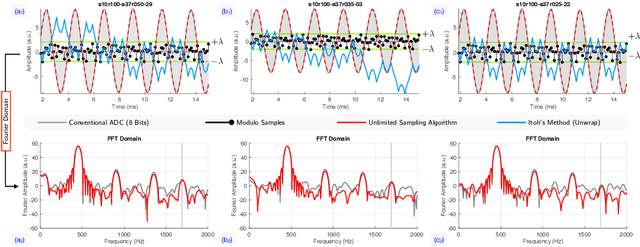Unlimited Sampling Radar: a Real-Time End-to-End Demonstrator
Paper and Code
Jun 30, 2023

In this paper, the trade-off between the quantization noise and the dynamic range of ADCs used to acquire radar signals is revisited using the Unlimited Sensing Framework (USF) in a practical setting. Trade-offs between saturation and resolution arise in many applications, like radar, where sensors acquire signals which exhibit a high degree of variability in amplitude. To solve this issue, we propose the use of the co-design approach of the USF which acquires folded version of the signal of interest and leverages its structure to reconstruct it after its acquisition. We demonstrate that this method outperforms other standard acquisition methods for Doppler radars. Taking our theory all the way to practice, we develop a prototype USF-enabled Doppler Radar and show the clear benefits of our method. In each experiment, we show that using the USF increases sensitivity compared to a classic acquisition approach.
 Add to Chrome
Add to Chrome Add to Firefox
Add to Firefox Add to Edge
Add to Edge